
14
Lecture
Thalamus and
Hypothalamus
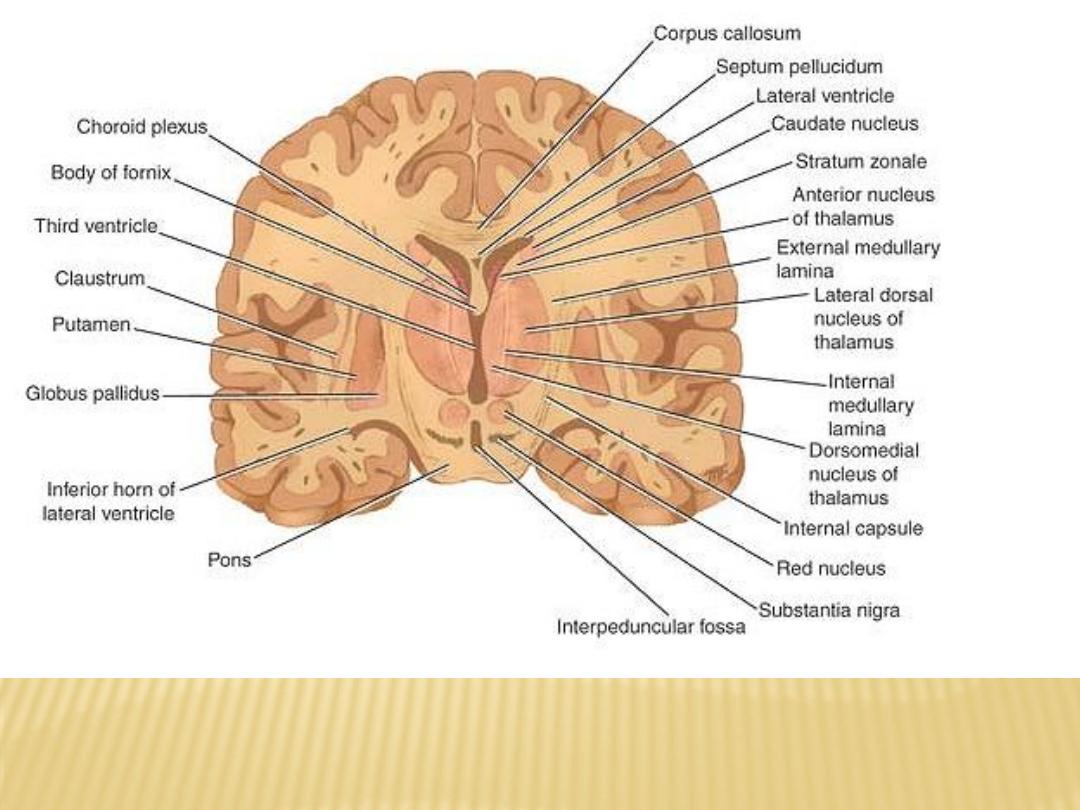
Coronal section of the cerebral hemispheres showing the position and
relations of the thalamus.
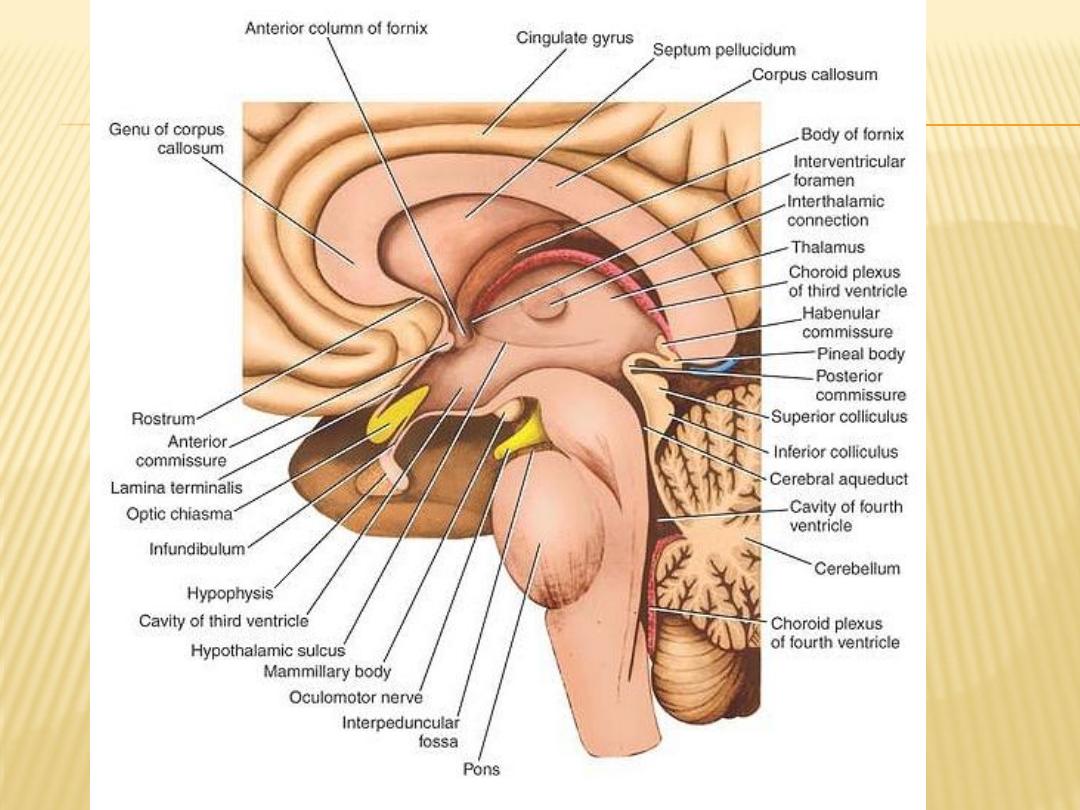

Thalamus
The thalamus is situated at the rostral end of the brainstem and functions as
an important relay and integrative station for information passing to all
areas of the cerebral cortex, the basal ganglia, the hypothalamus, and the
brainstem
General Appearances of the Thalamus
a large, egg-shaped mass of gray matter that forms the major part of the
diencephalon.
There are two thalami, one is situated on each side of the third ventricle
anterior end of the thalamus is narrow and rounded and forms the posterior
boundary of the interventricular foramen.
posterior end is expanded to form the pulvinar, which overhangs the
superior colliculus
inferior surface is continuous with the tegmentum of the midbrain
The medial surface of the thalamus forms part of the lateral wall of the third
ventricle and is usually connected to the opposite thalamus by a band of
gray matter, the interthalamic connection (interthalamic adhesion).

Subdivisions of the Thalamus
Anterior Part
contains the anterior thalamic nuclei
Medial Part
contains the large dorsomedial nucleus and several smaller nuclei
Lateral Part
The nuclei are subdivided into:
•
a dorsal tier (the lateral dorsal nucleus, the lateral posterior nucleus, and
the pulvinar) and
•
a ventral tier (consists of Ventral anterior nucleus, Ventral lateral nucleus
Ventral posterior nucleus)
Other Nuclei of the Thalamus
the intralaminar nuclei, the midline nuclei, the reticular nucleus, and the
medial and lateral geniculate bodies
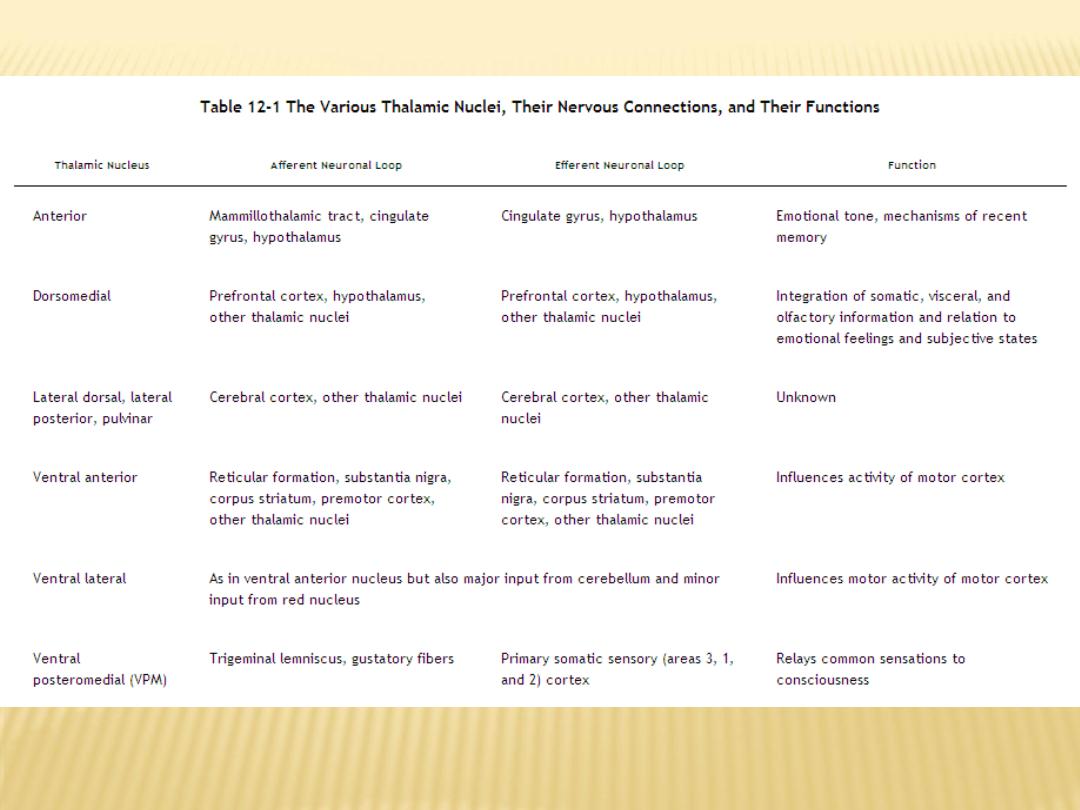
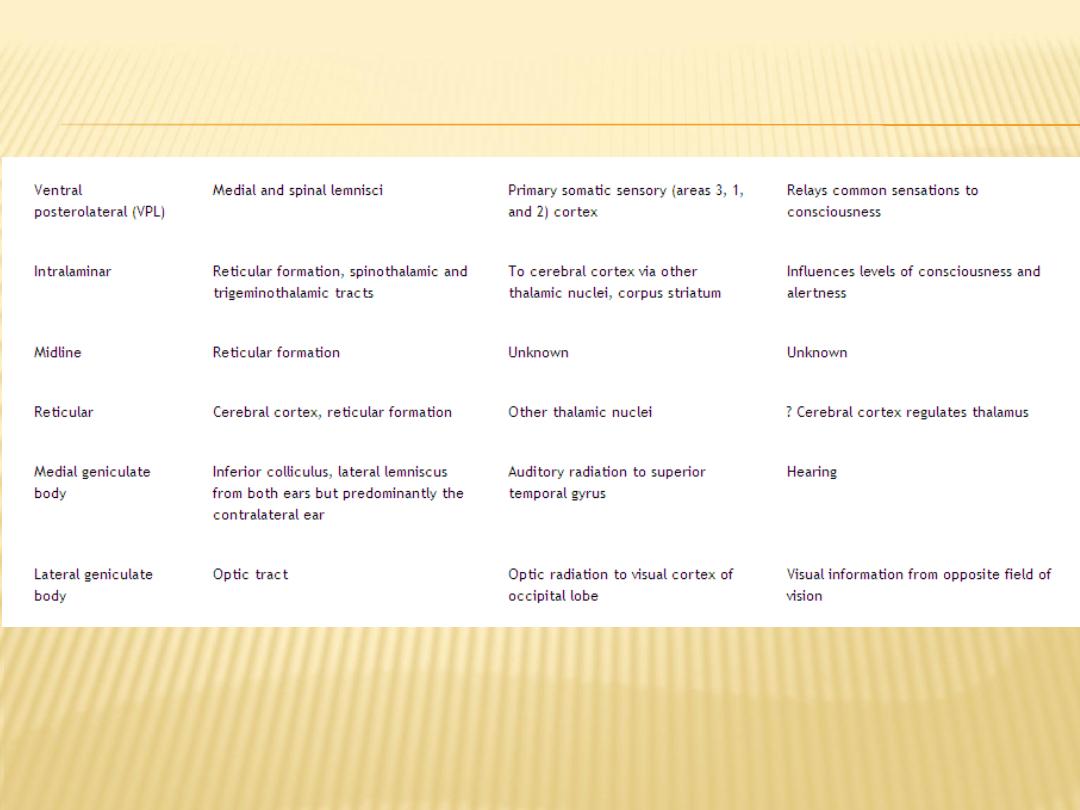

Connections of the Thalamus
1)
Every thalamic nucleus (except the reticular nucleus) connected to specific
parts of the cerebral cortex and every part of the cerebral cortex sends
fibers back to the thalamic nuclei
2)
is an important relay station for two sensory-motor axonal loops involving
the cerebellum and the basal nuclei
Functions of the Thalamus
A vast amount of sensory information of all types (except smell) converges on
the thalamus and is integrated through the interconnections between the
nuclei
The thalamus possesses certain very important nuclei
The ventroanterior and the ventrolateral nuclei of the thalamus form part of the
basal nuclei circuit and thus are involved in the performance of voluntary
movements
The intralaminar nuclei are closely connected with the activities of the reticular
formation

The Hypothalamus
is the part of the diencephalon that extends from the region of the optic
chiasma to the caudal border of the mammillary bodies. It lies below the
thalamus and forms the floor and the inferior part of the lateral walls of the
third ventricle
the hypothalamus is seen to be related to the following structures, from
anterior to posterior:
(1) the optic chiasma, (2) the tuber cinereum and infundibulum and (3) the
mammillary bodies
Hypothalamic Nuclei
the hypothalamus is composed of small nerve cells that are arranged in groups
or nuclei
They devided into:
Medial Zone
Lateral Zone
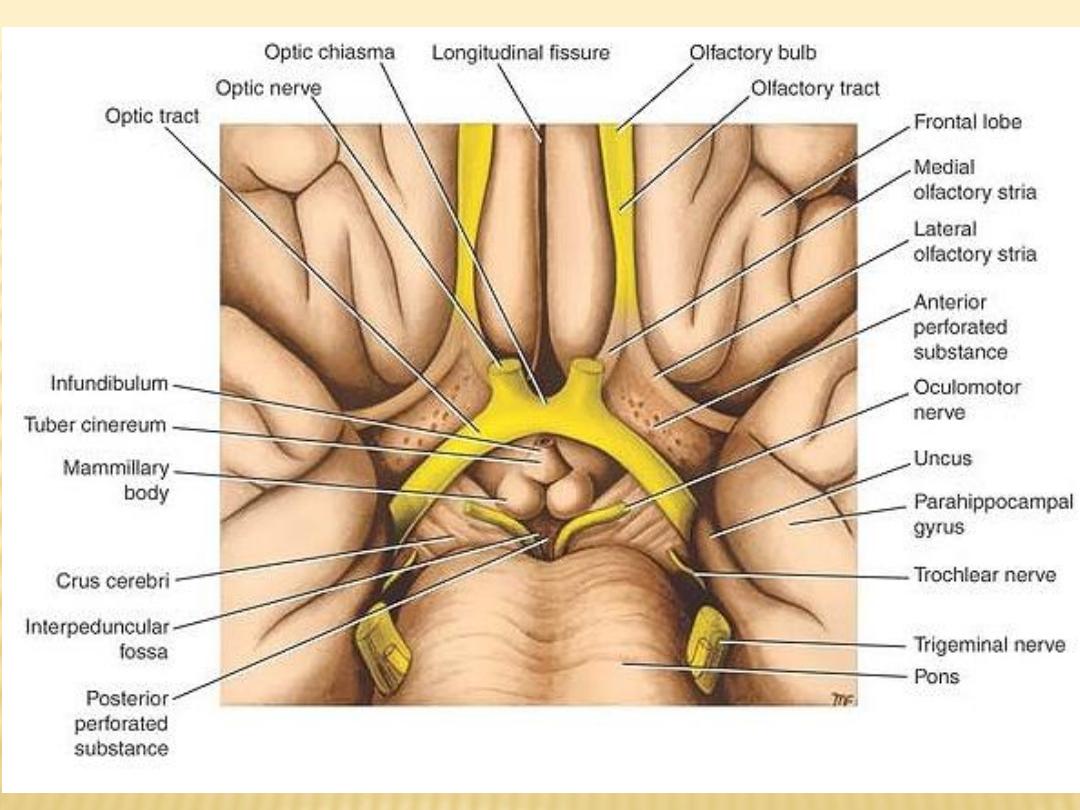

Hypothalamic Lines of Communication
The hypothalamus receives information from the rest of the body through
(1)
nervous connections
(2)
the blood stream
(3)
cerebrospinal fluid
The neurons of the hypothalamic nuclei respond and exert their control via the
same routes. The cerebrospinal fluid may serve as a conduit between the
neurosecretory cells of the hypothalamus and distant sites of the brain.
Afferent Nervous Connections of the Hypothalamus
Somatic and visceral afferents
Visual afferents
Olfaction travels.
Auditory afferents.
Corticohypothalamic fibers
Hippocampohypothalamic fibers
Amygdalohypothalamic fibers
Thalamohypothalamic fibers
Tegmental fibers

Efferent Nervous Connections of the Hypothalamus
1)
Descending fibers to the brainstem and spinal cord
2)
The mammillothalamic tract
3)
The mammillotegmental tract
4)
Multiple pathways to the limbic system
Connections of the Hypothalamus With the Hypophysis Cerebri
1- nerve fibers that travel from the supraoptic and paraventricular nuclei to the
posterior lobe of the hypophysis
2- long and short portal blood vessels that connect sinusoids in the median
eminence and infundibulum with capillary plexuses in the anterior lobe of
the hypophysis
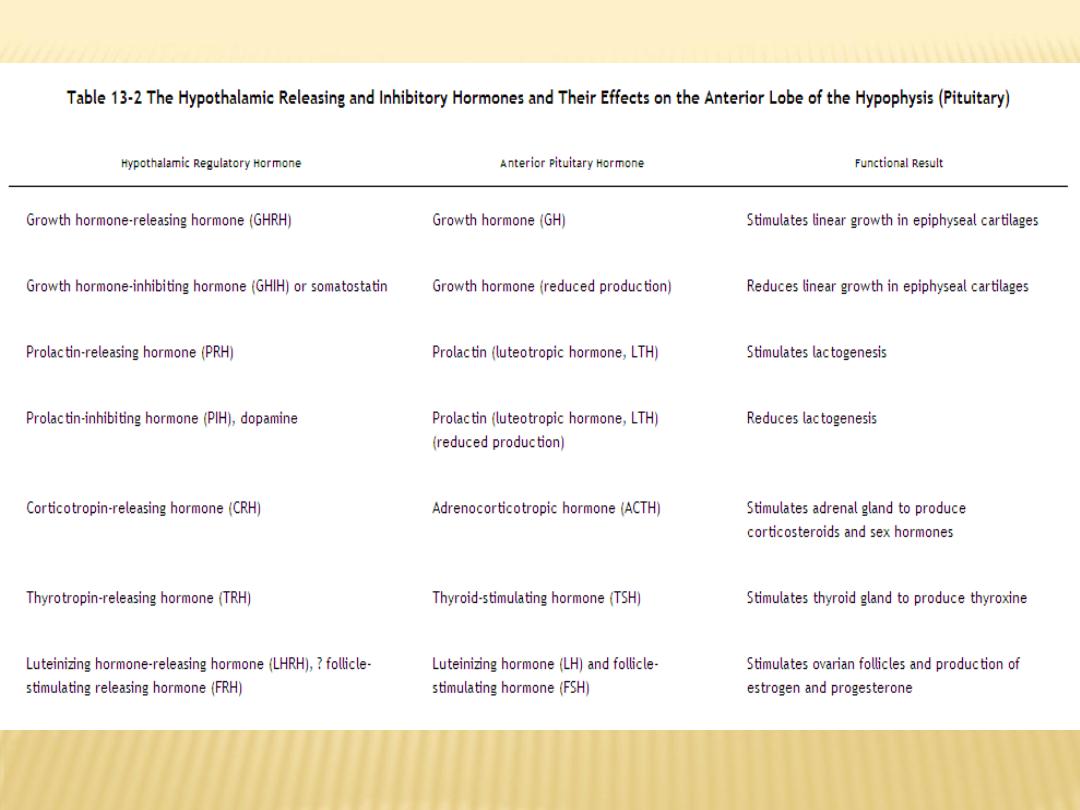
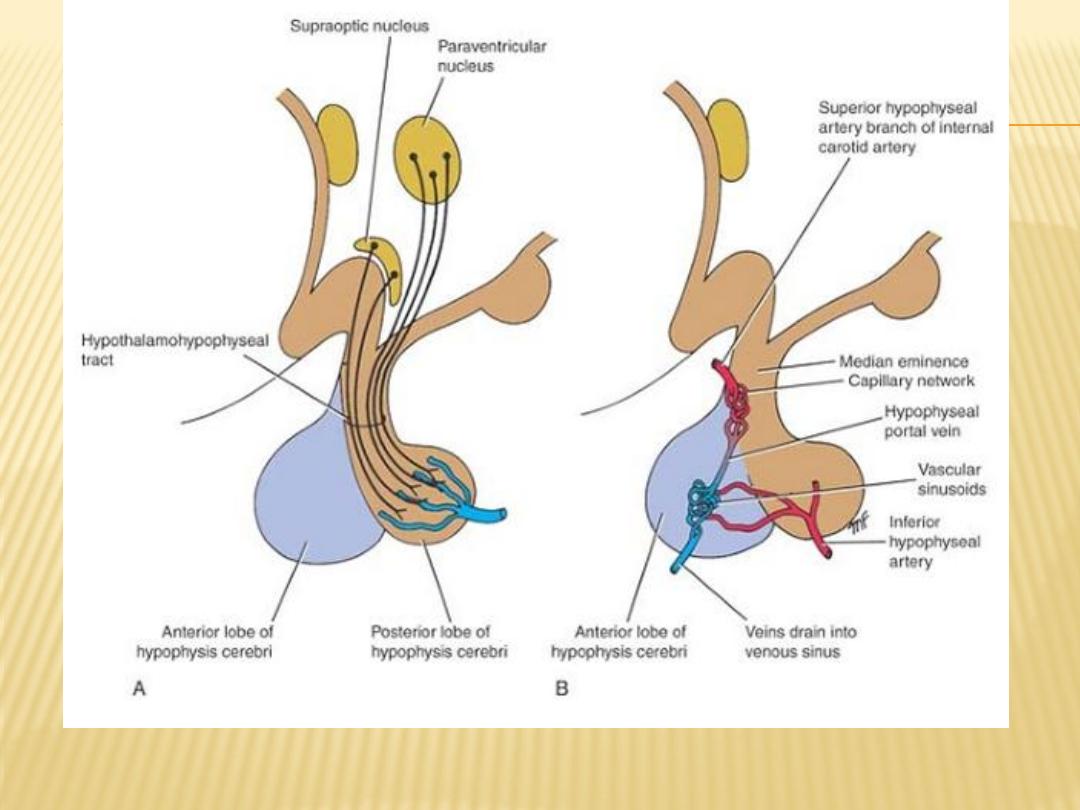
A: Hypothalamohypophyseal tract. B: Hypophyseal portal system

Functions of the Hypothalamus
Autonomic Control, has a controlling influence on the autonomic nervous
system and appears to integrate the autonomic and neuroendocrine
systems
Endocrine Control, by producing the releasing factors or release-inhibiting
factors
Neurosecretion, secretion of vasopressin and oxytocin
Temperature Regulation
Regulation of Food and Water Intake
Emotion and Behavior, Emotion and behavior are a function of the
hypothalamus, the limbic system, and the prefrontal cortex
Control of Circadian Rhythms
